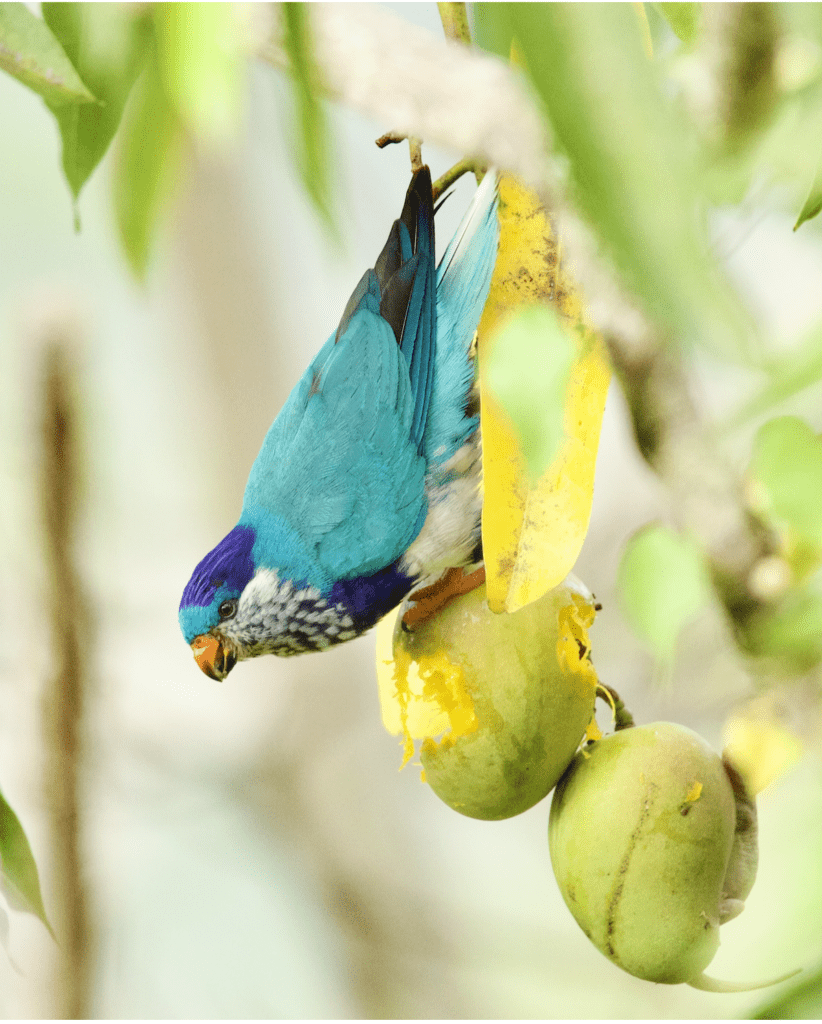Ultramarine Lorikeet Conservation
Status:

Collaborators/Funders:
Association Vaiku’a, Ernest Kleinwort Charitable Trust, Birds Australia Parrot Association (past), Société d’Ornithologie de Polynésie (past), Service du Développement Rural and the University of Adelaide (past), the People of French Polynesia and the Marquesas Islands.
The Ultramarine Lorikeet is a restricted-range species, endemic to the Marquesas Islands in northern French Polynesia. Its remaining population is on Ua Huka, a small island of 83 square kilometres. All islands where the lorikeets were formerly found have been colonised by ship rats. Emerging threats include ants and birds that may transmit disease.
The WPT is supporting ongoing conservation work for the Ultramarine Lorikeet. In 2003 the WPT, through its Small Grants Programme, supported a research and conservation program designed to increase the understanding of the species’ ecology and conservation requirements, determine the status and distribution of the species’ populations on each island within its range, stabilise their decline, confirm the rat-free status of Ua Huka, evaluate the feasibility of a rat eradication programme on Fatu Hiva, and raise awareness about the species’ plight to local people.
In 2024, with the support of the Ernest Kleinwort Charitable Trust and the WPT, Association Vaiku’a is conducting a population assessment of the Ultramarine Lorikeet and expanding the monitoring network to prevent the accidental introduction of ship rats via cargo.
Status: IUCN Critically Endangered / CITES Appendix II
Population: 1000-2500 mature individuals, stable.
Threats: This lorikeet has a restricted range. The only extant population is found on Ua Huka, a small island of 82 km². Introduced Black rats were the main cause of the species’ extirpation from most of the islands. Other potentially invasive species include birds that may transmit diseases, and ants.
Range: Restricted to Marquesas Islands of Nuku Hiva, Ua Pu and Ua Huka; fossil remains show that this species formerly ranged more widely.
Natural history: The Ultramarine Lorikeet is found above 700 m (2296 ft) elevation, in montane forest. Birds have also been seen in banana, coconut and mango plantations in coastal areas. They eat fruit, insects, pollen and nectar and feed in flowering trees. They are noisy and conspicuous despite low numbers and may allow close approach. Birds stay at or near the top of the forest canopy.
